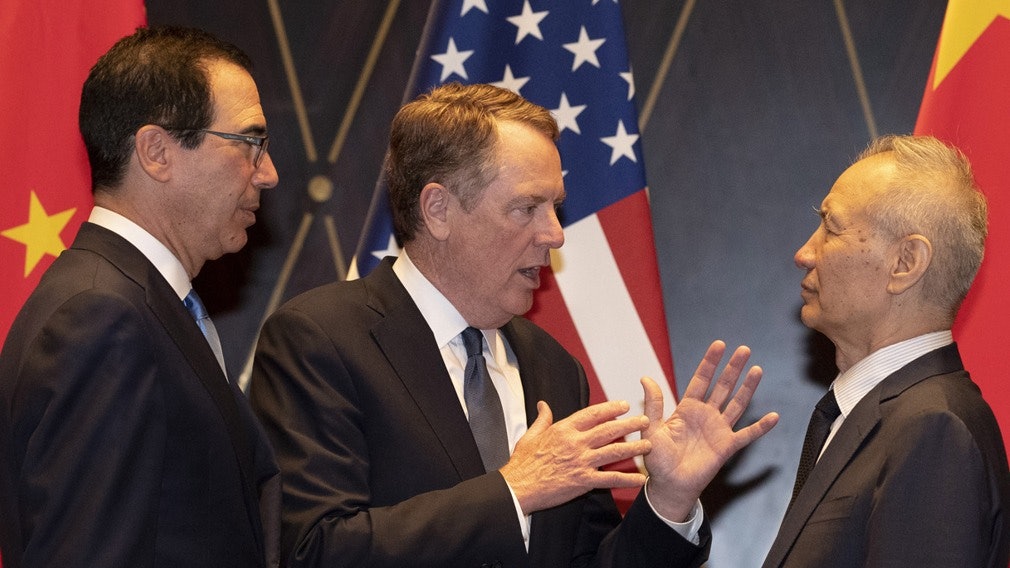The 12th round of trade consultation between China and the United States was held in Shanghai from July 30th to 31st. After the negotiations, both China and the United States announced the official draft.
In addition to introducing the relevant information of the negotiations, the official Chinese official draft also went out to participate in the negotiations.
The White House statement specifically proposed Liu He to lead the Chinese negotiating team, including Chinese Minister of Commerce Zhong Shan and other officials.
Sino-US talks in Shanghai, the participation of Zhongshan has attracted much attention. Previously, Bloomberg and other media reported many times that China’s Minister of Commerce Zhong Shan joined the negotiating core group for the first time. Zhongshan is considered to be more of a hardline than Liu He. Even the media said that the addition of Zhongshan is the beginning of the Sino-US 2+2 negotiation model.
From the situation of the Shanghai negotiations, the role of Zhongshan has been relatively clear.
The US and China trade negotiations leaders are still Robert Lighthizer and Steven Mnuchin, and China is still Liu He.
On the evening of July 30, Liu He and Wright Heze and Mnuchin boarded the terrace on the ninth floor of the Peace Hotel to visit Pujiang. Liu He and Wright Hize and Mnuchin took photos on the terrace with Lujiazui night scene as the background. The three people took a group photo in the middle of the rotation station in the same way as the previous practice of holding consultations in Beijing.
In the group photo before the July 31 negotiations, Liu He, Wright Heze, and Mnuchin took a group photo in front of the national flags of the two countries.
The composition of the Chinese delegation has changed, but the Chinese leader has not become two. The role of Zhongshan is a member of the Chinese negotiating team.
From July 9th to July 18th, he participated in the talks between Liu Hetong, Wright Heze and Mnuchin, and joined the Sino-US negotiations on July 30th and 31st. The role of Zhongshan in the Chinese manuscript is undoubtedly prominent. This is due to the position of Zhongshan in the Chinese bureaucracy. Within the government system, Zhong Shan is the Minister of Commerce of China. Within the Communist Party, he is the 19th Central Committee member.
Other officials involved in the Shanghai negotiations, Yi Gang, the president of the People’s Bank of China, is an alternate member of the 19th Central Committee. Ning Jiwei, deputy director of the China Development and Reform Commission, is an alternate member of the 19th Central Committee. Although they are all provincial and ministerial-level cadres, the status of Zhongshan in the Communist Party is half that of other delegation members. In other words, Zhongshan is an official with the qualifications of the official Chinese media. The prominent name makes the outside world mistakenly believe that Zhongshan is a negotiating official who can compare Liu He.
In fact, Liu He is a Chinese deputy prime minister. He is a member of the Political Bureau of the CPC Central Committee within the Communist Party of China. His ranking position is far from being side by side. The situation in the Shanghai negotiations also confirmed that Zhongshan is a participant rather than a leader.
In the Shanghai negotiations, the Chinese Ministry of Commerce system has both Minister Zhong Shan and Vice Minister Wang Shouwen to participate in the negotiations. This situation shows that there are many negotiations between China and the United States concerning the Ministry of Commerce. This is similar to the role of Wang Zhijun, deputy minister of the Ministry of Industry and Information Technology, and Han Jun, deputy director of the Ministry of Agriculture and Rural Affairs of China. The changes in specific negotiating matters between China and the United States determine the changes in the team’s personnel. This does not mean that the Sino-US negotiation model has changed.
In May this year, Sino-US negotiations were once deadlocked. The Shanghai negotiations were the first negotiations after the deadlock. China will not greatly adjust the way of negotiations because the negotiations have been deadlocked.
Today, the trade war has come to an end. The United States has gradually realized that it is impossible to compromise China through bullying. China has also found a counterbalance to Trump’s chips in agricultural trade. Beijing is gradually expanding its battle results without chaos, so there is no need for a major mode of negotiation.












